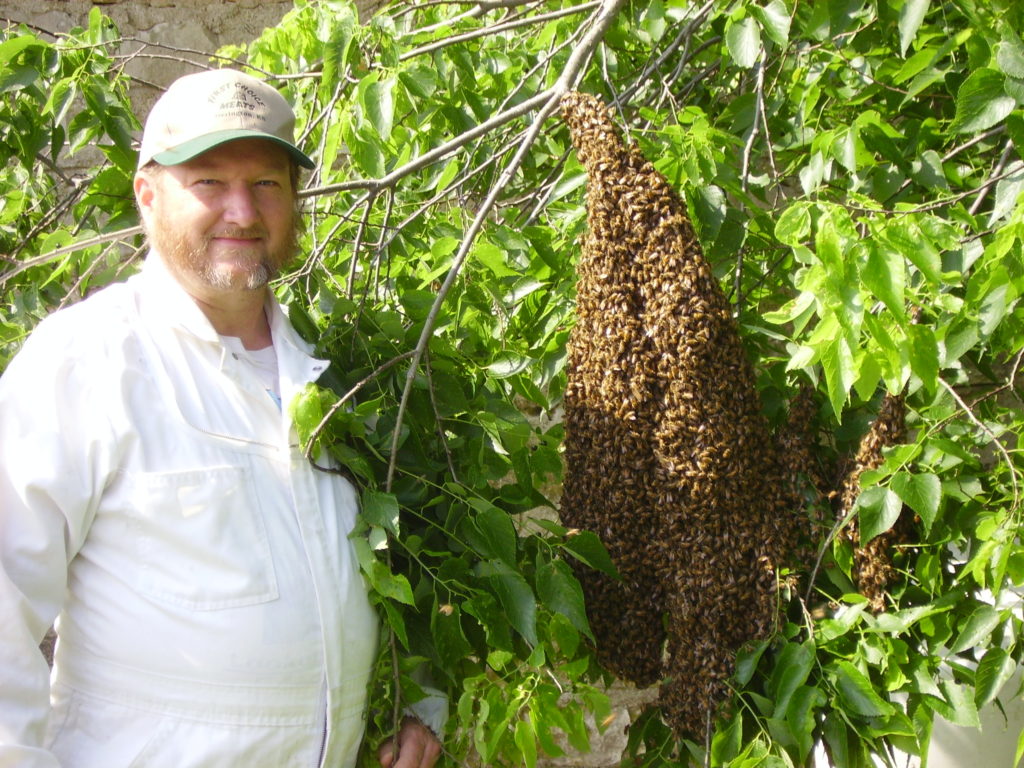
History Yes, that’s John with a wild swarm of bees he caught! Here at Shepherd’s Valley, we have been involved in beekeeping since the mid-1980’s, more or less on a hobby basis. Since that time, we have participated in many swarm and hive removal exercises. These wild bee rescue adventures have been written about in on-line publications – to the delight of our many honey customers. The pollination benefits of the honeybees in our orchard and gardens have been the most important aspect of keeping honeybees on the farm, and we continue to appreciate the value of honeybees to our operation.
Product Description We like to think of our honey as liquid sunshine, in all its beautiful golden sweetness. As a general rule, spring honey is light in color and has a mild taste. Late summer and early fall honey is darker in color and somewhat stronger tasting. This is due to the difference in wildflowers and crops available to the bees at any given time of the year. We use no chemicals in our hives, and follow organic and natural beekeeping practices. Our honey is sold raw – not heated or processed in any way. We do not add water, high fructose corn syrup, or synthetic chemical additives to our honey, as is often the case in lower priced supermarket honey. Our honey is lightly filtered through coarse cheesecloth or a stainless steel sieve for bottling. To meet our growing customer demand, we also purchase raw honey from other regional beekeepers.
We have sent our apprentices to biological beekeeping workshops featuring some of the top experts in the world. This commitment to updating our knowledge of natural and organic methodology in raising bees gives us the expertise to continue to preserve wild honeybees and protect this valuable resource in our environment.
John regularly gives presentations on honeybees and pollinators for schools and other groups. If you would like to schedule a presentation on this or some other topic, contact us.
Bee pollen was added to our growing line of bee products over a decade ago. Many of our customers, both young and old, are enjoying the health benefits of increased energy and endurance, as well as a decrease in hay fever and allergy related symptoms by regularly consuming bee pollen. An information sheet detailing the many vitamins, amino acids, enzymes, and trace minerals in bee pollen is available free on request.
Beeswax is occasionally available for purchase when we have surplus available. Beeswax is used not only in candle making, but is a primary ingredient in lip balms, herbal salves, and other health and beauty products.
Current Pricing Prices of honey and bee pollen reflect the seasonal flow of honey, as well as supply and demand, and as such, are subject to seasonal change. While we have remained relatively unaffected from the devastating effects of colony collapse disorder, recent catastrophic honeybee losses nationwide are pressuring American produced honey prices upward.
When glass honey jars are returned cleaned with intact lids, we pay 50 cents – $3.00 per jar, depending on the size. We wash, sanitize, and re-use these jars.
Click on Honey & Bee Products for current prices of honey and bee pollen in various sizes.
Raw Honey:
- 12 oz. Honey Bear
- 1 lb. Queenline glass jar
- 2 lb. Queenline glass jar
- 4 lb. Queenline glass jar
- 6 lb. ½ gallon glass jar
- 12 lb. 1 gallon glass jar
Bee Pollen:
- 4 oz. bag
- 8 oz. bottle
- 1 lb. bag